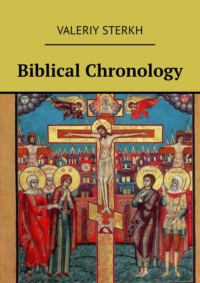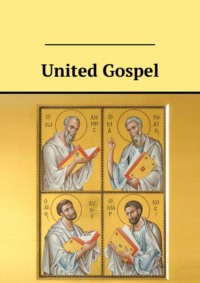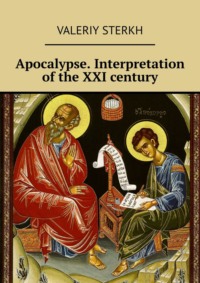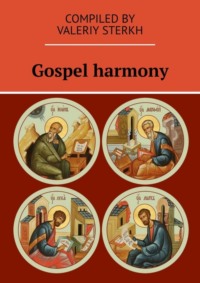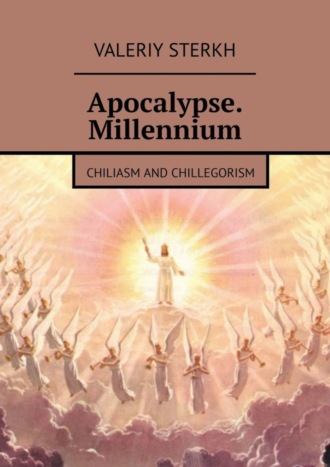
Полная версия
Apocalypse. Millennium. Chiliasm and Chillegorism

Apocalypse. Millennium
Chiliasm and Chillegorism
Valeriy Sterkh
Translator Evgeniy Terekhin
Translator Valeriy Sterkh
© Valeriy Sterkh, 2021
© Evgeniy Terekhin, translation, 2021
© Valeriy Sterkh, translation, 2021
ISBN 978-5-4498-7183-1
Created with Ridero smart publishing system
Introduction
The verses in John’s Revelation (the Apocalypse) about the millennial reign of Christ together with the righteous are still subject to fierce debate. There are two major lines of interpretation of these verses: literal and figurative. Both (Chiliasm and Chillegorism) are very diverse and have several important distinctions. This paper is only concerned with the major differences. First of all, we will explore the exegetical views that emerged between the 1st and 5th centuries and form the basis for further interpretations.
The book also provides the analysis of Chiliasm and Chillegorism based on some written sources translated for the first time as part of this research.
Review of the 2018 edition
“Apocalypse. Millennium: Chiliasm and Chillegorism” by Valeriy Sterkh draws the reader’s attention to the question which is not fully resolved in the Eastern Christian tradition, and, one might say, has been forgotten. The book gives a detailed analysis of chapter 20 of the last book of the Bible – The Revelation of John – with a primary focus on the Millennial Kingdom of Christ on earth. In keeping with the existing methods of interpretation of this passage, the author differentiates between the two major views – Chiliasm and Chillegorism. The first one is based on the literal rendering of the text in question, and the second one on its figurative (allegorical) interpretation. The term “Chillegorism” is not found in the theological literature; it is the author’s invention to help systematize the concepts related to the Millennial Kingdom. The author considers Judeochiliasm to be a form of Chiliasm, classifying it, from the Christian perspective, as a heresy. Premillenarism is treated as a variant of the dogma of the Holy Fathers and the Church. According to the author, Postmillenarism and Amillenarism are forms of Chillegorism and subspecies of the patristic exegetical tradition.
Section 2 is a brief history of this debate. Section 3 explains some chronological aspects of the teaching about the Millennium. Section 4 is an introduction to the most important texts of the ancient Church writers who held to Chiliasm. It would be a good idea to include here the chiliastic texts of St. Victorinus of Petava, translated from Latin and published by N.A. Handoga. It’s also a good idea to include not only the quotes from the commentary of St. Victorinus on the Apocalypse but also quotes from his treatise “On the Creation of the World”. Another suggestion is to translate the original excerpt from “Chapters against Gaius” by Hippolytus of Rome.
Section 6a is especially interesting because it deals with the biblical texts which allow for a chiliastic interpretation. The author did an excellent job collecting relevant excerpts and interpreting them from the point of view of patristic Chiliasm, presenting the biblical eschatology in a new light. Allowing for such an interpretation, at least in theory, helps the reader to discover new dimensions in Christian eschatology. The events preceding the end of the world appear more epic and more internally coherent than described in most books on dogmatic theology. The end will come not because of the “wearing out” of the world or because it is drowned in evil, but because God’s merciful plan for the earth will come to full fruition.
The chiliastic kingdom of Christ together with the righteous after His second advent looks more like the fulfillment of God’s promises to mankind, sealed in the Bible. It will a temporary era in the history of the earth, a “golden age”, a preparation and transition to the full acceptance by the creation of the eternal Kingdom and logical completion of the earthly history.
The author is not a professional scholar or theologian, and his work does not claim to be scientific research. However, it contains many bold and sound arguments in defense of Chiliasm, based on purely Orthodox insights into biblical and patristic theology. The author notes and demonstrates the weaknesses of chillegorical interpretations of the Millennium in light of the inner logic of the biblical texts in question.
Chiliasm and Chillelgorism serves as an introduction to a wide range of questions related to the millennial Kingdom of Christ. It is remarkable that the author stands up for the unpopular view of the ancient chiliastic writers and attempts to explore their arguments through the lens of the Bible and, partially, theology. An important addition to this book is a compilation “Anthology of Chiliasm and Chillegorism” by Valeriy Sterkh. It lists all the primary sources and the existing commentaries on the Millennium.
Most modern theologians, unfortunately, lack creativity in their approach, yet it can help to organically incorporate the chiliastic interpretation into the context of the Byzantine intellectual tradition and to enrich orthodox eschatology by solving a number of problems related to historiosophy and cosmology.
Gregory Musokhranov, a priest
Note: In subsequent editions, the author followed the suggestion of Father Gregory and included the texts of St. Victorinus and St. Hippolytus.
Section 1. Terminology
Millennium (Lat. Mille – one thousand) – a period of one thousand years.
Millenarism or Millenarianism (Lat. millenarius – containing a thousand) is the belief in a coming, literally or figuratively, millennial fundamental transformation of society, after which all things will be changed.
Chiliasm (Greek χιλιας – one thousand) or Millennialism (Lat. mille – one thousand) – a doctrine based on the literal interpretation of the prophecy of Rev 20:1—4 about the millennial reign of Christ together with the righteous.
Chillegorism (Greek. χιλιας – one thousand; αλληγορία – allegory) – a doctrine based on the figurative interpretation of the prophecy of Rev 20:1—4 about the millennial reign of Christ together with the righteous.
Chiliasm is further subdivided into Judeochiliasm and Premillenarism.
Judeochiliasm is a chiliastic doctrine of the Messianic Kingdom which represents the Kingdom in an almost entirely carnal sense, with all sorts of sensual pleasures promised to the followers of the Messiah. As a rule, Judeochiliasm includes the idea of a full restoration of the ceremonial part of the Mosaic law in the Old Testament, that is, of Judaism.
Premillenarism or Premillennialism (Lat. mille – one thousand; “pre” means “before”) – chiliastic teaching placing the Second Coming of Christ before the millennial reign of Christ together with the righteous.
The two types of Chillegorism are Postmillenarism and Amillenarism.
Postmillenarism or Postmillennialism (Lat. mille – one thousand; “post” means “after”) – a type of Chillegorism which teaches that the Second Coming of Christ will occur after the millennial reign of the righteous; the reign here is understood as something already happening or something that will happen in the future. In Postmillenarism, the Millennium is seen as not exactly a 1000 years but as an extended period of some limited duration.
Amillenarism or Amillennialism (Lat. mille – one thousand; “a” is a negation prefix) – a type of Chillegorism which teaches that there will be no millennial reign of the righteous on earth. Amillennarists interpret the thousand years symbolically to refer either to a temporary bliss of souls in heaven before the general resurrection, or to the infinite bliss of the righteous after the general resurrection.
PS1. In modern theology, there is a tradition of using the term “Chiliasm” or “Millennialism” mainly in relation to the teachings that imply a literal interpretation of Rev 20:1—4. We will retain the same terminology here to avoid confusion. Also, a new term “Chillegorism” (i.e. “allegorical Chiliasm”) is introduced as a general concept of Postmillenarism and Amillenarism.
PS2. Some authors writing on the topic use these terms incorrectly, often confusing them with each other (especially “Postmillenarism” and “Amillenarism”). However, if the reader knows the proper meaning of these terms, such errors are fairly easy to spot. So, in the citations below, we retain the terminology “as is”.
Some will say that “the fundamental difference between Postmillennialism [Postmillenarism] and Amillennialism [Amillenarism] is not entirely clear” (Nikolay Kim, a priest, The Millennial Kingdom. Exegesis and the History of Interpreting the 20th Chapter of the Apocalypse. St. Petersburg, 2003, p. 28), or that “the term ‘Amillennialism’ [‘Amillenarism’] is not a happy one” (Anthony A. Hoekema Amillennialism//The Meaning of the Millennium, 1977; see also Jay E. Adams, The Time Is at Hand, Philadelphia: Presbyterian and Reformed Publishing Co., 1970. pp.7—11). The real reason for such confusion lies in the incorrect definition and use of the above terms.
PS3. There are other types of chiliastic and chilleagorical doctrines (Adventism, Jehovah’s Witnesses [their activities are banned or restricted in some countries], Dispensationalism, Communism, etc.). Most of them are speculative, heretical or non-Christian in their nature. A detailed analysis of these teachings is not in the scope of this book.

Section 2. Background
Premillenarism as a doctrine was developed after the wide dissemination of the book of Revelation (The Apocalypse) which talks about the future millennial reign of the righteous. This doctrine can also be found in other canonical books of the Bible, though in a less clear way (See Section 6a).
In early Christian sources, Premillenarism appears as ideas about a separate resurrection of the saints (Didache, St. Clement of Rome, St. Ignatius the God-Bearer, St. Polycarp of Smyrna), a thousand-year Sabbath or a time of peace for the righteous (St. Barnabas, St. Justin the Philosopher and Martyr), the transformation of nature that happens in this time (St. Barnabas, St. Papias of Hierapolis). A highly detailed exposition of the patristic version of Premillenarism is found in “Against Heresies” by St. Irenaeus of Lyons.
Premillenarism was also supported by the Apostle Hermas, Clement of Alexandria, bishop Nepos of Egypt, Tertullian, St. Hippolytus of Rome, Commodian of Gaza, St. Victorinus of Petava, St. Athanasius the Great, St. Methodius of Patara and Olympus, Lucius Lactantius, St. Sulpicius Severus (presumably), St. Aurelius Augustine of Hippo (in his early works, later he leaned towards Chillegorism).
Premillenarism was opposed by the heresy of Hymenaeus and Alexander Philetus (who interpreted the resurrection allegorically [2 Tim 2: 16—18; 1 Tim 1:18—20]) as well as by the heresy of the Ebionites (Judeochiliasm), the heresy of Marcion (who taught about the resurrection of souls), the heresy of the Alogi (who rejected the books of the Apostle John), the heresy of Origen (taught about pre-existence and evolution of souls), the heresy of Marcellus of Ancyra (one of the founders of Postmillenarism), the heresy of Apollinaris of Laodicea (opposed by St. Basil the Great, St. Gregory the Theologian, St. Epiphanius of Cyprus who accused him of Judeochilasm).
The above-mentioned heresy of the Alogi even influenced the books which were included in the canon of the Holy Scriptures – some Christians, following their deception, even questioned the apostolic origins of the Apocalypse (Gaius of Rome, St. Dionysius of Alexandria, Eusebius Pamphilius of Caesarea), and as a result, the book of Revelation became part of the canon with much delay.
Over time, the heresies of Hymenaeus and Alexander Philetus and the heresy of Marcion were transformed into Chillegorism of the Alexandrian school (probably under the influence of Origen). This tendency was severely criticized by the bishop Nepos of Egypt in his book “Refutation of the Allegorists” [“Denunciation of the Lovers of Allegory”]. However, this new teaching found favor with those who had rejected the apostolic origins of the Apocalypse, namely Gaius of Rome, St. Dionysius of Alexandria, Eusebius Pamphilus of Caesarea.
From the 4th century on, when Christians were no longer persecuted in the Roman Empire, the teachings of Gaius of Rome on the “restraining of Satan” (Rev 20:2) became popular among some theologians. This is when Chillegorism took its final form. The following people took an active part in this process: Ephrem the Syrian, St. Philastrius of Brescia, Tychonius Africanus, St. Jerome of Stridon, St. Aurelius Augustine of Hippo, Theodoret of Cyprus. Later, Chillegorism made its way into the widespread “Interpretation of the Apocalypse” by Andreas of Caesarea, which further popularized this teaching.
In the Russian Orthodox theology, Chillegorism was popularized by the metropolitan Macarius Bulgakov in his textbook “The Dogmatic Teaching of the Orthodox Church”. This textbook (more precisely, the Chillegorism it taught) was harshly and most vehemently criticized by the priest Boris Kiryanov in his book “The Complete Explanation of the Earthly Millennial Kingdom of our Lord”.
Section 3. The chronological aspects of the problem
Chronological considerations left their mark on both Chiliasm and Chillegorism.
The Apostle Barnabas suggested that the Second coming of Christ would happen 6000 years after the creation of the world. After that, the resurrection of the chosen righteous would take place – the first resurrection [Rev 20:5]. After that comes the Millennium of peace [Rev 20:6]. He based this opinion on the correlation between the seven days of creation and the literal interpretation of the Biblical statement about the day of the Lord being like a 1000 years [Gen 1:1—2:3; Ps 90:4 (Ps 89:5 rus); 2 Pet 3:8]. The Old Testament promise of the seventh day, the Sabbath [Ex 20:8; Deut 5:12; Ps 24:3—4 (Ps 23:3—4 rus); Jer 17:24—25], was interpreted as a prophecy of the millennial Kingdom (Epistle of Barnabas, chapter 15).
St. Justin the Philosopher and Martyr also supported this view by adding his interpretation of the verse from Isaiah “the days of My people, the works of their hands, will be like unto the days of the tree of life” [Is 65:17—25] as well as his reckoning of God’s promise about Adam dying on the day of eating of the tree of the knowledge of good and evil [Gen 2:17] – Adam was not 1000 years old when he died (Conversation with Triphon, the Jew, 81).
This opinion is shared by St. Irenaeus of Lyons (Against Heresies, 5, 28, 2—3), Hippolytus of Rome (Commentary on the book of Daniel, 4, 23—24; Chronicle), Commodian of Gaza (Carmen apologeticum adversus judaeos et gentes), St. Methodius of Patara and Olympus (The Feast of the Ten Virgins, Discourse 9, Tisiana, chapter 1 and 5), Lucius Lactantius (The Divine Institutes, VII, 14).
The same position was held by Andreas of Caesarea who quoted St. Hippolytus of Rome (Commentary on the Apocalypse, chapters 28, 54, 63).
The idea was that at the end of the seventh millennium, the universal resurrection of the remaining righteous and all sinners would take place corresponding to the eighth day – the day of the resurrection: “For all our care about a virtuous living is looking forward to the future, to the age to come, the onset of which, following the cessation of the sensual time which runs in cycles of weeks and days, is called the eighth day. That is why the superscription: According to sheminith
Besides, at that time an idea was widely spread that the first coming of Christ had taken place about the year 5500 from the Creation of the world. It was shared by St. Hippolytus of Rome (Commentary on the book of Daniel, 4, 23—24), Sextus Julius Africanus (Chronographiai, fragment 18). We can also find traces of it in the apocryphal gospel of Nicodemus:
“Then Seth said, having approached the holy prophets: “When I, Seth, prayed to the Lord at the gates of Paradise, Michael, the archangel of the Lord, closed them, and an angel appeared to me saying: “I am sent from the Lord; I have been given charge over the body of your father. Therefore, I say unto you, Seth: do not labor with tears praying and asking for the balm of the tree of mercy to anoint your father Adam’s ailed body. For according to some law, you will only be able to get it in the end times, when 5500 years have been fulfilled (from the creation of the world) [in some manuscripts 5505 or 5555]. Then, the beloved Son of God, Christ, will appear on earth to restore the body of Adam and to raise the dead. And He will come to the river Jordan to be baptized, and when He has come out of the waters of the Jordan, He will anoint all those who believe unto him with the oil of His mercy, and the oil of His mercy will make one born of water and Spirit unto eternal life. Then, having come down to earth, the beloved Son of God, Christ, will take your father to Paradise and the tree of mercy” (Gospel of Nicodemus, chapter 19).
This view was based on the correlation between the birth of Adam some time in the course of the sixth day [Gen 1:26—31] and the coming of the new Adam (i.e. Christ) in the middle of the sixth millennium.
In these chronological calculations, the beginning of the events related to the last days would fall about 500 years after Christ. This was one of the reasons why Chillegorism was not prevalent in the first few centuries of Christianity. In the Apocalypse, Satan’s imprisonment lasts for 1000 years [Rev 20:2—3], while the postmillenarists came up with just 500 years. That’s why at that time, premillenarism seemed more reasonable in terms of the existing chronology.
However, in the first few centuries, even chillegorists were expecting the end of the world in 500 NE (from the New Era). They did it even though they were not able to successfully fit the 1000 years of Satan’s imprisonment into the 500 years. It must have been Tychonius Africanus who first found a solution. He suggested that the second half of the sixth millennium should be reckoned as [the seventh (?)] millennium, just like the three days of Jesus’ remaining in the tomb do not constitute three full days (Tychonius Africanus, The Book of the Seven Rules for Studying and Understanding Scripture, Rule 5. Concerning the times).
This idea was then picked up by other chillegorists: St. Jerome of Stridon (The Second edition [by Hieronymus] of “Commentary on the Apocalypse”, St. Victorinus of Petava, on Rev 20:1—3), St. Aurelius Augustine of Hippo (On the City of God, book 20, ch.7), Andreas of Caesarea (Commentary on the Apocalypse, chapter 63).
After 500 NE (from the New Era), it became clear that “more time now has elapsed than what was said concerning the fullness of years, or five hundred years” (Oicumenuis, Commentary on the Apocalypse, Rev 12). Some theologians came to the opinion that 6000 years have not yet passed. They incorporated shorter chronologies from the creation of the world (see, for example, Pr. Boris Kiryanov, Complete Explanation of the Earthly Millennial Kingdom of our Lord, Chapter 6. Concerning chronology). Postmillenarists, on the other hand, had one more reason to expect the end of the world by 1000 NE; there was a corresponding prediction attributed to Pope Sylvester II (who, according to the legend, prevented the Judgement Day from taking place that year by overcoming the devil). After that, the date for the end of the world shifted several times. In Russia, the coming of the Antichrist was set on the year 7000 according to the Byzantine era (1492 NE), and they didn’t even dare to compile Paschal tables beyond this date. However, the predictions did not come true, and gradually Christian theology shifted to the idea that “it is not for you to know the times or the seasons, which the Father hath put in his own power” (Act 1:7). “For yourselves know perfectly that the day of the Lord so cometh as a thief in the night” (1 Thess 5:2).
The idea that the events of the last days will be sudden existed from the very inception of Christianity (Mt 24:42—51, 25:13; Mk 13:32—37; Act 1:4—8; 1 Thess 5:1—10). Despite other opinions, many Church Fathers believed it and passed it on down the centuries (St. Clement of Rome, The Second Epistle to the Corinthians, chapter 12; Apostolic Decrees, 7, 31). Even those who believed that the end of the world would happen by the year 6000 viewed it as an assumption, simultaneously believing in the suddenness of the Lord’s coming (St. Irenaeus of Lyons, Against Heresies, 5, 30, 2; St. Hippolytus of Rome, Commentary on the book of Daniel, 4, 16). Generally speaking, they considered any chronological calculations about the end of the world as an indulgence of human curiosity (St. Hippolytus of Rome, Commentary on the book of Daniel, 4, 22—23).
Section 4. An anthology of the ancient Chiliasm
The author’s note: Initially, I wanted to include in this section not only the anthology of Chiliasm but also a brief overview of the development of these doctrines over time. But due to the limited space, I decided to only give a summary of the most important points.
St. John the Evangelist, the Apostle, one of the 12 (c. 2 – c. 102)
And I saw heaven opened, and behold a white horse; and he that sat upon him was called Faithful and True, and in righteousness he doth judge and make war. His eyes were as a flame of fire, and on his head were many crowns; and he had a name written, that no man knew, but he himself. And he was clothed with a vesture dipped in blood: and his name is called The Word of God. And the armies which were in heaven followed him upon white horses, clothed in fine linen, white and clean. And out of his mouth goeth a sharp sword, that with it he should smite the nations: and he shall rule them with a rod of iron: and he treadeth the winepress of the fierceness and wrath of Almighty God. And he hath on his vesture and on his thigh a name written, KING OF KINGS, AND LORD OF LORDS. And I saw an angel standing in the sun; and he cried with a loud voice, saying to all the fowls that fly in the midst of heaven, Come and gather yourselves together unto the supper of the great God; That ye may eat the flesh of kings, and the flesh of captains, and the flesh of mighty men, and the flesh of horses, and of them that sit on them, and the flesh of all men, both free and bond, both small and great. And I saw the beast, and the kings of the earth, and their armies, gathered together to make war against him that sat on the horse, and against his army. And the beast was taken, and with him the false prophet that wrought miracles before him, with which he deceived them that had received the mark of the beast, and them that worshipped his image. These both were cast alive into a lake of fire burning with brimstone. And the remnant were slain with the sword of him that sat upon the horse, which sword proceeded out of his mouth: and all the fowls were filled with their flesh.



